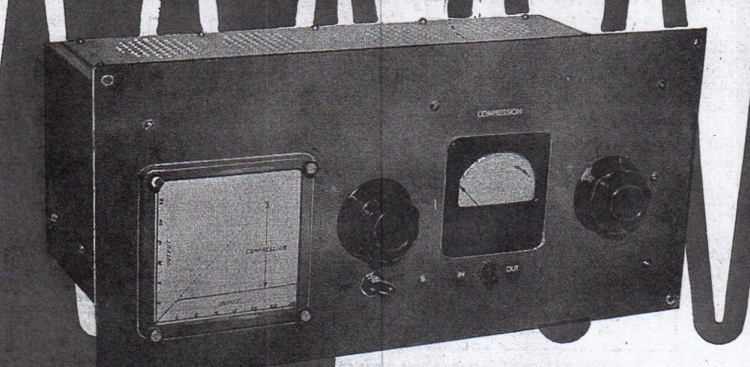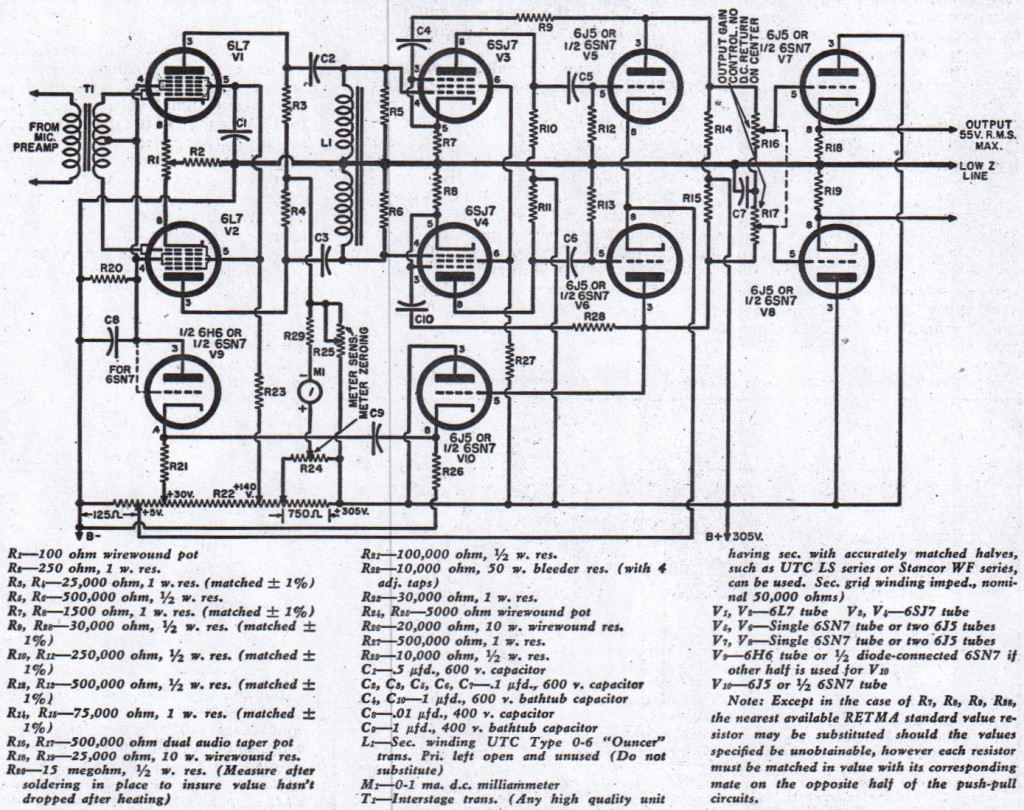 Courtesy of reader Bill W comes today’s scan of a much more complex tube limiter project. Herbert Hartmann penned this 1955 article for RADIO & TELEVISION NEWS.
Courtesy of reader Bill W comes today’s scan of a much more complex tube limiter project. Herbert Hartmann penned this 1955 article for RADIO & TELEVISION NEWS.
DOWNLOAD THE COMPLETE ARTICLE: 1955 Limiting Amplifier
Similar in principle to the Altec 436/438 and the Gates Sta-Level, the Hartmann unit is a Vari-Mu design. As the author points out, the release time spec’d here is too fast to allow for totally distortion-free low frequency response. If you’ve ever messed around with an Altec tube compressor, you will know that there is a real ‘limit’ to how fast you can make the release before distortion and artifacts emerge. This was one of the real advantages of those insanely complex contemporary Fairchild and GE mastering and/or broadcast compressors, btw: through some really inventive (and expensive) designs, they overcome the timing issues inherent in simpler devices like the Altecs and Gates units. Here’s the Hartman schematic:

3 replies on “A DIY Broadcast Limiter Project circa 1955”
I was lucky enough to have made friends with Herb. He was a genius. I have never been able to say that about anyone else I’ve ever known. He was cleaning out a bunch of old stuff and I offered to help him. He asked me if I wanted this old piece of gear he had built back in the fifties along with a bunch of other parts and gear he had bought or built. I’m lucky enough to own that exact piece of equipment picture in this article.
Most closely resembles the WE 1126 and Altec 322, not too far from the Gates SA-39.
Hi doug. I had not seen the SA39 schematic when I originally posted this, but you are certainly correct – this unit does bear more resemblance to it. Do you have a sense of why the SA39 is so much more complex than the altecs or sta levels (or AM864), when the topology and control interface are so similar? Is it faster somehow, less distorted, greater reduction range? Just curious to know, because it’s not entirely clear to me what the advantage of the add’l complexity is – they seem so similar in underlying principle.